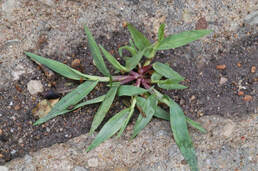
Aside from manually removing plants, crabgrass can be difficult to control once it has germinated. Therefore, prevention is the best approach for controlling crabgrass. Maintaining a thick, healthy lawn will prevent crabgrass seeds from germinating. Mow your lawn no shorter than three-inches which will help prevent sunlight from reaching the seeds on the soil surface. Around mid-April apply a pre-emergent to combat seeds from the previous growing season.
At this point in the season, it is too late for a crabgrass preventer. If manual removal is not an option there are some herbicides that will kill crabgrass plants including: Ortho Weed-B-Gon Max + Crabgrass Control, Fertilome Weed-Out with Crabgrass Control, Monterey Crab-E-Rad and BioAdvanced Lawn Weed & Crabgrass Killer. Each contains quinclorac, which is a crabgrass herbicide, as well as other active ingredients that control broadleaf weeds. Quinclorac is an excellent crabgrass killer that controls not only crabgrass but also has good activity on foxtail and certain broadleaves such as field bindweed, black medic and clover. However, it does little to nothing to goosegrass. If you use crabgrass killer on your lawn bag the clippings. Do not use them as mulch or in compost. (Cynthia Domenghini)
 RSS Feed
RSS Feed
